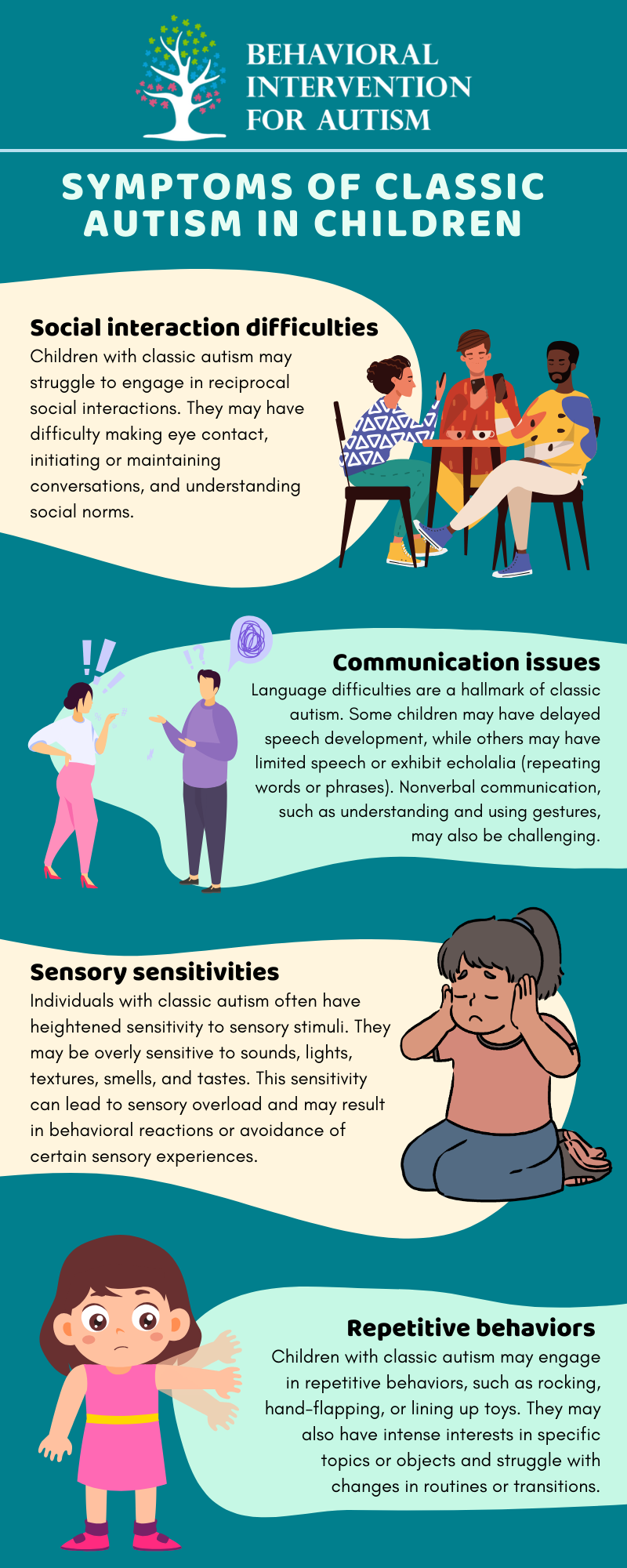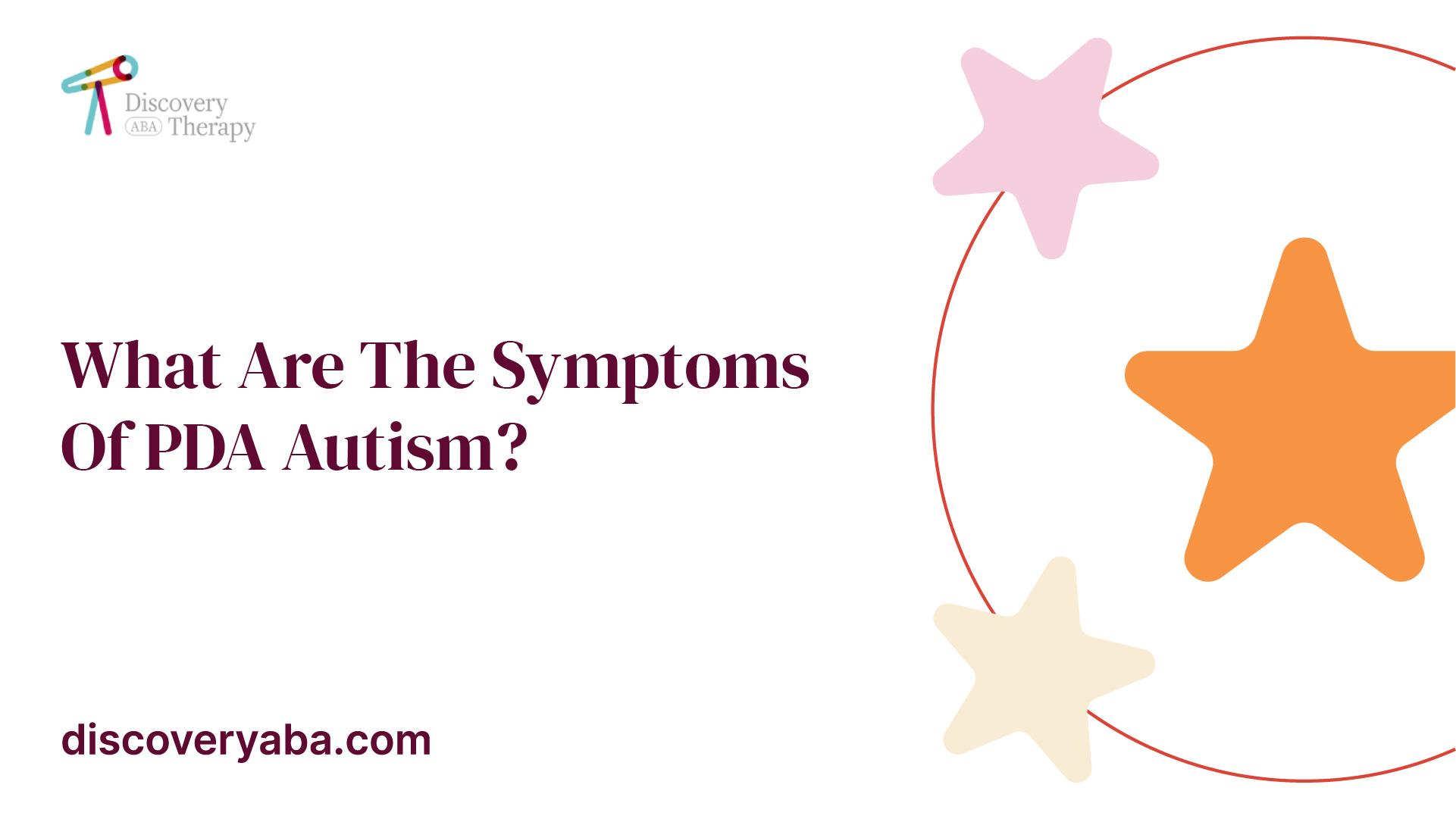Do Autism Spectrum Therapies help with developing independence in teens with ASD?
Do Autism Spectrum Therapies help with developing independence in teens with ASD?
Blog Article
Understanding the Influence of Behavioral Autism on Day-to-day Live and Social Interactions
You might not realize how deeply behavior autism affects day-to-day life and social interactions. Individuals on the spectrum usually browse a globe filled with interaction obstacles and sensory overload. These difficulties can lead to frustration and isolation, affecting their connections and general wellness.
Defining Behavior Autism and Its Features
Behavior autism, often described as autism spectrum condition (ASD), includes a variety of problems defined by difficulties in social interaction, communication, and repeated actions. You could see that people with ASD typically struggle to translate social signs, which can bring about misconceptions in conversations. They might discover it tough to develop eye get in touch with or take part in little talk, making social scenarios feel overwhelming.
Interaction difficulties can show up in different means, from postponed speech development to a choice for utilizing less words. Repeated habits, such as hand-flapping or rocking, can act as coping devices to take care of tension or sensory overload. These characteristics can profoundly impact life, making it necessary for you to recognize and support those with ASD. By acknowledging these qualities, you can cultivate a setting that advertises approval and motivates reliable communication, assisting individuals with autism grow in their day-to-day interactions.
The Spectrum of Autism: Understanding Irregularity in Habits
Autism range disorder (ASD) isn't a one-size-fits-all medical diagnosis; it differs commonly among individuals. You may encounter individuals that are very spoken and engage easily in conversations, while others may prefer solitary tasks or communicate non-verbally.
Moreover, the method people with ASD reply to sensory input can differ greatly; some could be overwhelmed by loud sounds or brilliant lights, whereas others thrive in stimulating settings. The spectrum likewise consists of differences in social communications; some people may battle to translate social signs, while others browse social settings with family member convenience. Comprehending this irregularity is vital, as it assists you value each individual's distinct experience and dressmaker assistance to their certain demands, fostering an extra comprehensive environment for everybody.
Interaction Obstacles Faced by Individuals With Autism
When you connect with individuals on the autism spectrum, you may observe their unique communication obstacles. They commonly encounter difficulties with both verbal and nonverbal signs, which can influence their social interactions. Comprehending these obstacles is essential for promoting far better links and assistance.

Verbal Interaction Troubles
Lots of individuals on the autism spectrum experience spoken communication difficulties that can considerably affect their daily communications. Your quantity, pace, or tone may not align with social assumptions, creating others to misinterpret your intentions. Identifying these obstacles can aid you and your support network create methods to enhance communication and promote much better connections with others in your day-to-day life.
Nonverbal Communication Obstacles
Verbal interaction isn't the only difficulty people on the autism spectrum face; nonverbal interaction barriers can be equally as considerable. You could find it hard to translate body language, face expressions, and eye contact, which are important for effective communication. These obstacles can cause misconceptions or false impressions of social hints, making communications feel frustrating or confusing. You may have a hard time to share your own feelings via nonverbal ways, leaving others unsure of your sensations or objectives. This separate can create feelings of isolation and aggravation. Identifying these obstacles is important for cultivating understanding and compassion in your interactions. By attending to nonverbal interaction, you can discover methods to boost your social experiences and enhance your overall lifestyle.
Social Communication Effects
Social interactions can often feel frustrating as a result of the one-of-a-kind interaction difficulties dealt with by individuals with autism. You might struggle with interpreting social cues, making it difficult to comprehend sarcasm or body language. This can result in misunderstandings or awkward moments in discussions. In addition, starting and preserving conversations might feel challenging, creating anxiousness in social circumstances. You may prefer organized settings, making spontaneous interactions uncomfortable. It's additionally typical to experience difficulty in participating in tiny talk, which can impede forming brand-new friendships. Recognizing these challenges can assist you locate techniques to boost interaction, such as exercising social abilities in safe setups or utilizing visual help - Autism Behavioral Therapy. Recognizing your requirements allows you to navigate social interactions with greater self-confidence and simplicity.
Social Communication and Partnership Structure in Autism
While structure connections can be challenging for individuals with autism, comprehending their unique viewpoints and interaction styles can promote purposeful links. You may see that many individuals on the range favor straight communication and may deal with social signs or small talk. By being simple in your communications, you can help create an atmosphere where they feel comfortable.
Take the time to listen and observe exactly how they reveal themselves. This understanding can guide you in steering conversations better. Engaging in shared interests can also act as a bridge to deeper connections. Whether it's a pastime, a favored program, or a common interest, these usual threads can open doors to friendship.
Day-to-day Live Regimen: Browsing Techniques and challenges
Navigating day-to-day live routines can be particularly challenging for people with autism, specifically when unanticipated adjustments take place. You may discover comfort in having a structured timetable, as it aids you expect what's next. When interruptions happen, it's regular to feel overloaded or anxious. To navigate these challenges, think about carrying out visual schedules or lists. These tools can offer clarity and confidence.
Establishing a routine that includes sensory breaks can additionally be beneficial. This assists develop an understanding environment.
Finally, technique mindfulness techniques to handle tension and anxiousness. Simple breathing exercises or basing techniques can make a substantial distinction. By incorporating these methods, you can boost your everyday regimen and reduce interruptions, making life really feel extra manageable.
Staminas and Capabilities of People on the Autism Range
Recognizing day-to-day life regimens is just one element of the autism experience. Numerous individuals on the autism spectrum possess amazing staminas and capabilities that set them apart.
In addition, your memory visit skills typically radiate, specifically this link in areas of interest. Aba Therapist Near Me. This propensity for keeping info can make you a valuable resource in fields like art, modern technology, or scientific research. You may also display strong visual reasoning, enabling you to imagine complex principles and fix issues creatively
In addition, your special point of view on the world can cultivate empathy and understanding in others, enriching social communications. Accepting these strengths not just increases your confidence yet likewise helps others value the diverse abilities you give the table.
Creating Comprehensive Atmospheres for People With Autism
Producing inclusive environments for individuals with autism starts with developing sensory-friendly spaces that accommodate their special requirements. You can likewise foster opportunities for social communication, assisting to develop connections and friendships. By making these modifications, you'll add to a much more inviting atmosphere for everybody.
Creating Sensory-Friendly Spaces
While making sensory-friendly rooms, it's essential to mirror on the one-of-a-kind requirements of individuals with autism. Incorporate quiet zones where people can pull back and charge when overwhelmed. Include visual timetables or clear signage to aid people navigate the room with confidence.
Promoting Social Communication Opportunities
Creating sensory-friendly areas not just addresses private comfort but additionally establishes the stage for meaningful social communications among individuals with autism. To promote these interactions, develop inclusive settings that invite participation. Arrange organized tasks, like art classes or team video games, that encourage cooperation without frustrating sensory input. Use visual aids and clear interaction to assist everyone involve conveniently. Urge peer mentoring, combining individuals with autism with encouraging peers who can assist them through social circumstances. Additionally, take into consideration hosting normal community events that commemorate neurodiversity, promoting approval and understanding among all individuals. By implementing these strategies, you can improve social opportunities, aiding individuals with autism develop friendships and reinforce their social abilities in a safe, inviting environment.

Often Asked Concerns
Exactly How Can Friends Support Somebody With Behavioral Autism?
You can sustain a pal with behavioral autism by holding your horses, listening actively, and respecting their boundaries. Participate in activities they take pleasure in, connect honestly, and produce a comfortable setting where they feel valued and comprehended.
What Resources Are Offered for Parents of Children With Autism?
You can check out different resources for moms and dads of kids with autism, go to this website including assistance groups, educational internet sites, and regional social work. Getting in touch with other moms and dads can also give beneficial insights and shared experiences to aid browse challenges.
Can Behavioral Autism Adjustment Gradually?

Yes, behavioral autism can change over time. You might discover shifts in interaction, social abilities, and habits as your youngster grows. Early intervention and assistance typically play essential roles in these developmental adjustments.
Exactly How Do Sensory Level Of Sensitivities Affect Day-to-day Live?
Sensory sensitivities can make everyday experiences overwhelming. You may have problem with intense lights or loud sounds, resulting in stress and anxiety or avoidance. Finding atmospheres that suit your needs can substantially improve your comfort and general life.
What Prevail Misconceptions About Behavioral Autism?
You may believe behavior autism just influences communication skills, but it's more complicated. Lots of presume people lack empathy or intelligence, which isn't true. Understanding these false impressions aids foster approval and assistance for those on the range.
Behavior autism, frequently referred to as autism spectrum disorder (ASD), encompasses a range of conditions identified by difficulties in social interaction, interaction, and recurring actions.Social communications can often really feel frustrating due to the one-of-a-kind interaction difficulties dealt with by individuals with autism.Creating sensory-friendly rooms not just addresses private comfort but additionally establishes the stage for meaningful social interactions amongst individuals with autism. Encourage peer mentoring, coupling people with autism with helpful peers who can lead them with social circumstances. By carrying out these approaches, you can boost social opportunities, aiding people with autism construct relationships and strengthen their social abilities in a risk-free, welcoming setting.
Report this page